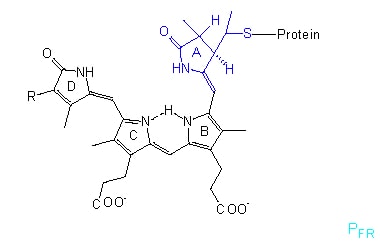Thermometer molecule enables plants to develop
Q. What are phytochrome?- Published on 01 Nov 16a. Molecules to detect light during the day by plants
b. Temperature gauges that measure the night’s heat
c. Both of the above
d. None of the above
ANSWER: Both of the above

Plants know when to start growing leaves or flowers after winter, thanks to a thermometer molecule that enables plants to develop as per seasonal temperature changes.
- As nights get warmer, sensors throw genetic switches that kick off growth.
- University of Cambridge researchers have found that molecules called phytochrome are used by plants to detect light at the time of the day.
- They change their functioning in the darkness to become temperature gauges that measure the heat of the night.
- At night, the molecules change states and the pace at which they change is proportional to temperature according to scientists who compare phytochrome to mercury in a thermometer.
- The warmer it is, the faster the molecular change-stimulating plant growth.
- Farmers and gardeners have been aware of how responsive plants are to the temperature and warm winters cause many trees and flowers to blossom early.
- This is something humans have been used to predict weather and harvest times for the coming year.
- The most recent research indicates that the molecular mechanisms in plants react to temperature often triggering the spring.
- Some species such as daffodils have massive temperature sensitivity and can flower months in advance during the warm winter.
- With weather and temperatures set to become unpredictable due to climate change, the discovery that this light sensing molecule moon lights as an internal thermometer in plant cells could help in breeding tougher crops.
- The work was done in a model system, a mustard plant called Arabidopsis.
- Phytochrome genes ensure temperature sensing are found in crop plants as well.
- In their active state, phytochrome molecules bind themselves to DNA to restrict plant growth.
- During the day, the sunlight activates the molecules, slowing down growth.
- If the plant finds itself in a shade, phytochromes are inactivated enabling it to grow faster to find sunlight again.
- This ensures that the plants compete to escape each other’s shade.
- Light driven changes to phytochrome activity occur fast in less than a second.
- Molecules change from active to inactive state called dark reversion.
- Warmer temperatures speed up dark reversion so that phytochrome rapidly reaches an inactive state and detaches themselves from DNA permitting genes to be expressed and plant growth to resume.